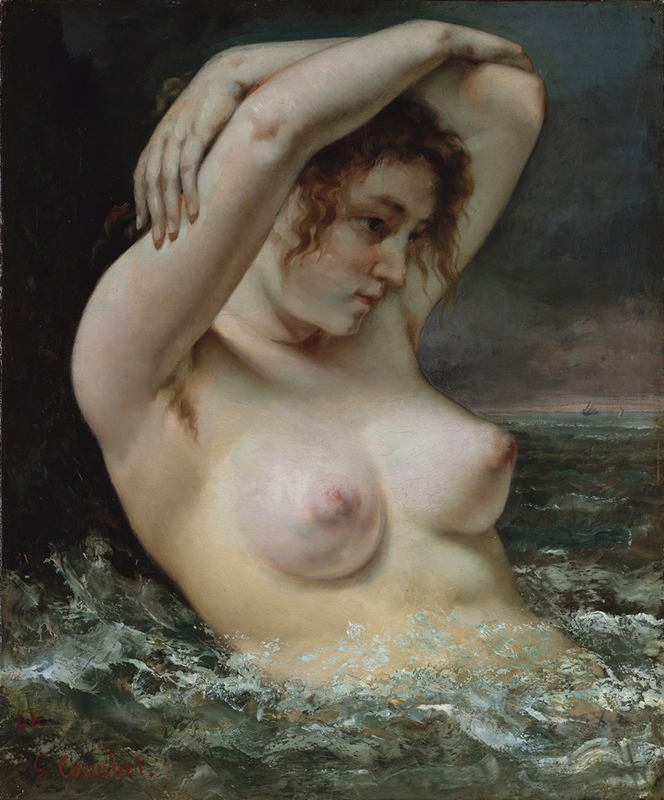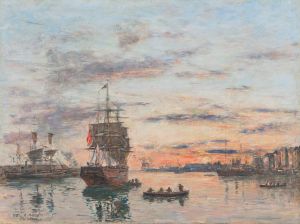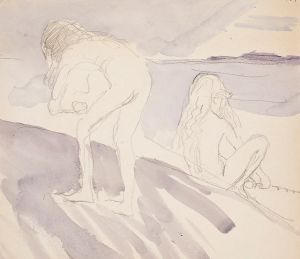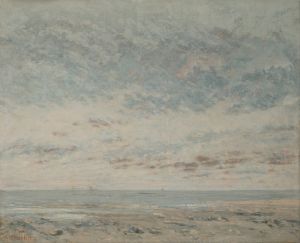
The Woman in the Waves
A hand-painted replica of Gustave Courbet’s masterpiece The Woman in the Waves, meticulously crafted by professional artists to capture the true essence of the original. Each piece is created with museum-quality canvas and rare mineral pigments, carefully painted by experienced artists with delicate brushstrokes and rich, layered colors to perfectly recreate the texture of the original artwork. Unlike machine-printed reproductions, this hand-painted version brings the painting to life, infused with the artist’s emotions and skill in every stroke. Whether for personal collection or home decoration, it instantly elevates the artistic atmosphere of any space.
"The Woman in the Waves" is an oil painting created by the French artist Gustave Courbet in 1868. Courbet, a leading figure in the Realist movement, is known for his commitment to depicting everyday life and ordinary people with a sense of authenticity and unidealized beauty. This painting is a notable example of his approach to the human form and naturalism.
The artwork measures approximately 65 by 54 inches (165 by 137 cm) and is currently housed in the Metropolitan Museum of Art in New York City. "The Woman in the Waves" portrays a nude woman emerging from the sea, her body partially submerged in the water. She is depicted with her arms raised, her hands behind her head, and her gaze directed towards the viewer. The waves around her are rendered with dynamic brushstrokes, capturing the movement and texture of the water.
Courbet's model for this painting was Joanna Hiffernan, an Irish woman who was also the muse and lover of the American artist James McNeill Whistler. Hiffernan's striking red hair and fair complexion are evident in the painting, contributing to the overall luminosity and sensuality of the composition. Courbet's treatment of the female form in "The Woman in the Waves" is both realistic and idealized, showcasing his skill in rendering the human body with a sense of weight and presence.
The painting is notable for its bold and direct approach to the nude figure, a subject that was often treated with a sense of idealization and modesty in academic art of the time. Courbet's depiction is unflinching and unapologetic, emphasizing the natural beauty and physicality of the woman. This approach was consistent with the Realist movement's rejection of romanticized and classical ideals in favor of a more truthful representation of the world.
"The Woman in the Waves" was exhibited at the Paris Salon of 1868, where it received mixed reactions from critics and the public. Some praised Courbet's technical skill and the painting's sensuality, while others were scandalized by its frank depiction of nudity and the model's direct gaze. Despite the controversy, the painting has since been recognized as an important work in Courbet's oeuvre and a significant example of 19th-century Realist art.
Courbet's influence on the art world extended beyond his own time, paving the way for later movements such as Impressionism and Modernism. His commitment to depicting reality as he saw it, without embellishment or idealization, challenged traditional notions of beauty and art. "The Woman in the Waves" remains a testament to his innovative spirit and his ability to capture the essence of his subjects with honesty and sensitivity.
Today, "The Woman in the Waves" continues to be admired for its technical mastery, its boldness, and its contribution to the evolution of modern art. It stands as a powerful example of Courbet's artistic vision and his impact on the trajectory of Western art history.


















